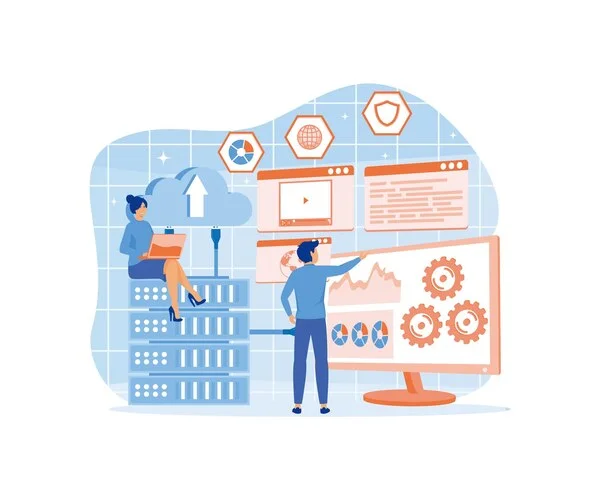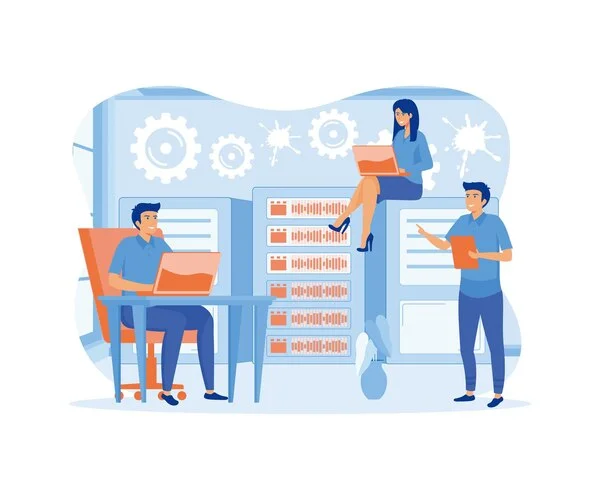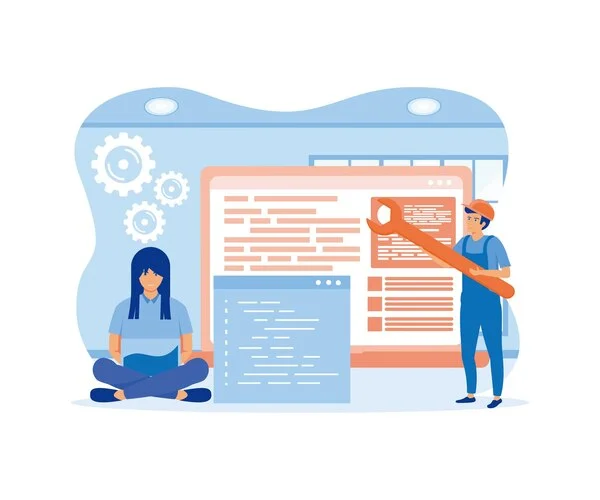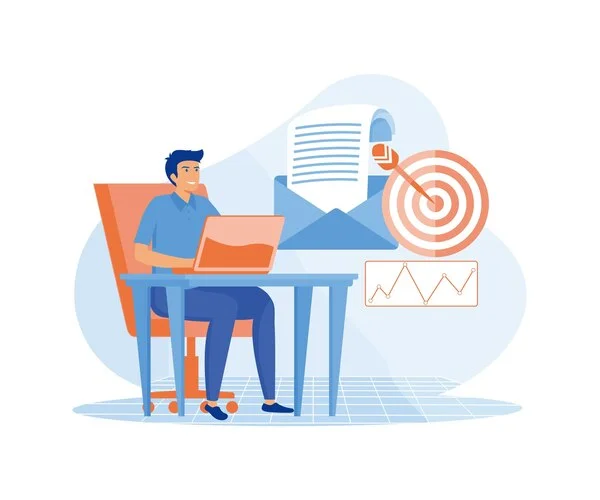Have you ever wondered how your business is truly perceived in the public eye? Media content analysis can reveal surprising truths about what is being said about you and how it affects your reputation. Dive into the world of intelligence and discover strategies that can be game-changing for your PR.

Glossary
- 🌐 Content analysis - a research method that allows you to evaluate the content and forms of information presentation in the media.
- 📊 PR (Public Relations) - a set of activities aimed at creating and maintaining a positive image of an organization or individual.
- 🔍 SMM (Social Media Marketing) - the practice of promoting products or services through social networks.
- 📈 ROI (Return on Investment) - return on investment coefficient, an indicator of the effectiveness of spending on advertising and PR events.
- 🗂️ Data classification is the process of grouping information into predetermined categories to facilitate its analysis.
- 📅 Content plan - schedule of publications and events aimed at achieving strategic goals in the field of communication.
- 🎯 The goals and objectives of the research are specific points that need to be clarified in the process of content analysis to achieve the desired result.
- 📅 Stages of content analysis - sequential steps that include goal definition, collection, classification, analysis and data correction.
- 📚 Data collection is the process of searching and studying information from various media sources for subsequent analysis.
- 👥 Audience is a group of people to whom messages and media materials are directed, whose interests and behavior are analyzed.
- ⚖️ Content quality - evaluation of a message in terms of its relevance, credibility and level of impact on the target audience.
Understanding Media Content Analysis and Its Applications
When I first came across content analysis in the media, I had a question: “How can we understand what they are saying about us?” This thought consumed me and I decided to study media content analysis methods to assess the reputation of my brand. In the process, I realized that content analysis is not only numbers and statistics, but also an interesting story, full of discoveries and surprises.

For example, I once helped conduct analysis of publications about their news. First, I collected all the materials, organized them into categories, and focused on mentions related to the introduction of a new product. The face of the company, its employees and even clients spoke with delight about the project, but in the text of some publications I came across dissatisfied comments and actions against our initiative. This surprised me. While communicating with colleagues and friends, I heard the following: “How can this be? The product has a good reputation, but the media has the opposite opinion!”
Then, having collected the data, I extrapolated the situation, working with qualitative and quantitative analysis. Quantitative metrics showed that mentions of negativity in major publications increased by almost 30% following an active advertising campaign. This confirmed my previous observations and I decided to conduct a more in-depth qualitative analysis to understand the context and tone of the mentions.
Many PR specialists and marketers do not realize how extensively content analysis impacts the success of their business. I remembered how once at a conference on PR strategies a famous expert said: “Media content analysis is the tool that allows you to see the sails of your brand and adjust course in the ocean of information!” And I transferred this postulate to my activities. Analyzing the publications, I discovered that some critical points did not correspond to the real situation at all, and from there an opportunity arose to work through the negativity, reduce reputational risks, and even establish interaction with critics.
Types of content analysis and their significance
In the process of work, I identified two main types of content analysis: quantitative and qualitative . Each has its own unique characteristics and provides different perspectives for analysis.
Quantitative analysis focuses on measurable data. For example, it tracks how many times a brand is mentioned in articles and how this relates to the number of views and comments. Here's some data: One online resource noted that during the launch of a new product line, the total number of mentions increased by 50% compared to previous months!
Qualitative analysis goes deeper into the meaning of the texts . I have formed the opinion that this stage is critical not only for discovering popular opinion about the brand, but also for understanding the context in which it is presented. Publications can be positive, but if they do not reflect the true essence of the product, it can affect the final result.
"The correct approach to analysis not only highlights unreliable publications, but also helps to establish a dialogue with the audience." - Owen Woods, expert from eBay.
These methods work in pairs, allowing you to not only to identify the current state of affairs, but also to predict dynamics, plan PR campaigns and improve the overall image.
How to Conduct Effective Content Analysis Using
If you, like me, want to analyze information about your brand yourself, the following steps will help you do this:
- Data Collection: Start by defining your objectives. What exactly are you interested in? Volume of mentions? Comparison with competitors?
- Data Coding: Categorize information. This could be topics, tone, type of publication, etc.
- Sentiment Analysis: Determine whether the sentiment of mentions is positive, neutral or negative. Every detail is important!
- Competitive Comparison: Simply collect data on competitive activity in the same time period.
- Interpretation of the results: Based on the data obtained, you will be able to plan your further actions.

So, one day, I helped a brand competently adapt your strategy after analyzing the data. After studying two years of publications, we realized that consumers not only wanted the product, but also valued the company's transparency. This became the basis for a new PR campaign, which was successfully evaluated throughout the year!
Steps for Effective Content Analysis:
| Step | Description |
|---|---|
| 1. Data Collection | Determine the topic and source of information. |
| 2. Data coding | Divide the data into categories by type of publication. |
| 3. Sentiment Analysis | Study how people perceive your brand. |
| 4. Comparison with competitors | See how your competitors are covered in the media. |
| 5. Interpretation of results | Adjust based on the data your strategy. |
In summary, media content analysis is a powerful tool that allows companies not only understand their reputation, but also build smart strategies for the future.
How to conduct effective media content analysis
Stage 1. Goals and Objectives of the Analysis
When I first thought about conducting content analysis for one of the projects, I was faced with an important task - to determine what information I needed to extract. Just imagine: I was preparing a promotion strategy for our new product and wanted to understand exactly how the target audience perceived it. This left me with a question: “How do I increase visibility among women aged 18-24?” In this context, it has become important to analyze not only your own mentions, but also become familiar with the reputation of your competitors.

I began to formulate specific tasks. First, research mentions of competitors in the media to understand which channels worked best and how my company can adapt best practices. Having prepared a list of keywords and phrases, I was ready to search.
The process of realizing your goals is like placing beacons that will not allow you to go astray.
Step 2: Data Collection
Once the goals have been clearly defined, it is time to data collection. Here I used several tools. Think about it, if I just searched for mentions manually, it would take forever! Therefore, I turned to specialized monitoring services. They provided an incredible amount of information right in one application.
🤔 During the analysis process, I learned that many mentions of competitors are found not only in traditional media, but also in blogs and social networks. One day, while analyzing the data, I noticed that one of the competing companies was attracting attention through succinct posts on Instagram. This became a real insight for me
Stage 3. Data classification
At this stage, emotions went off scale. I remembered how I divided the data I collected into categories: articles, interviews, blogs. With each new mention, it became increasingly clear that one of the competitor's interview-style posts significantly increased their visibility.
🗂️ I divided the materials according to their format and structure. The classification allowed me to answer the question of which formats worked best and how exactly I could apply this knowledge to my own content plan. When analyzing competitors, I paid attention to articles marked as “advertising.” This gave me the opportunity to understand how much budget competitors allocate for promotion.
“Choosing the right publishing format is like choosing the right color for the walls in your home,” Russell Montgomery, Amazon Expert.
Stage 4. Analysis and adjustment of content plan
To sum it up, I had in my hands a ready-made guide to creating a content plan. Analyzing the data, it became clear to me that competitors prefer certain topics and formats, which made it possible to highlight genres such as interviews and expert articles.
📊 I have compiled a list of suitable media and good topics for publication, based on the information collected. For example, publications on the Medium platform showed high performance. This added confidence in my decisions!
“Real decisions are born from the analysis of real data,” - Bernard Arnault, French billionaire businessman, president and CEO of the Louis Vuitton Moët Hennessy group of companies.
| Step | Action | Result |
|---|---|---|
| 1. Goals | Define specific goals and objectives | Clear understanding of goals |
| 2. Collection | Use analytical services | Fast and high-quality data collection |
| 3. Classification | Data separation by types | Clearly see effective formats |
| 4. Adjustment | Creating a content plan | Effective promotion strategy |
Thus, media content analysis is a powerful tool for any business seeking to improve its reputation and increase its competitiveness.

Often questions asked on the topic: Media content analysis
What is media content analysis?
Media content analysis is a research method that allows you to evaluate the content of publications about a company, product or service in the media. This analysis helps to understand how the brand is perceived in society.
What is the purpose of content analysis for business?
The purpose of content analysis for business is to obtain insights about brand perception, identify key trends, evaluate the effectiveness of PR campaigns and optimize content plans.
What types of content analysis are there?
There are several types of content analysis, including quantitative (analysis of the number of mentions, sentiment, etc.) and qualitative (analysis of content, key messages , presentation style, etc.).
Why use media content analysis?
Content analysis helps a business better understand its place in the market, adapt to changing conditions, and build effective PR strategies based on the data obtained.
What are the main stages of conducting media content analysis?
The main stages include: 1) Defining the purpose and objectives of the analysis; 2) Collection of data from various sources; 3) Classification of collected data; 4) Data analysis and content plan adjustment.
How to determine the purpose of content analysis?
The purpose of content analysis is determined depending on the business needs. This could be a reputation analysis, assessing the perception of a new product, or the effectiveness of PR campaigns.
What data sources can be used for content analysis?
You can use a variety of sources for content analysis, including news, social media, blogs, forums, and press releases.
How is data classified in content analysis?
Data is classified by topics, sentiment, types of mentions, sources and other criteria that help organize information for subsequent analysis.
What happens at the stage of analyzing and adjusting the content plan?
At this stage, the collected and classified data is analyzed in order to identify patterns and trends, as well as adjust the content plan to achieve business goals.
Thank you for reading! You are wiser now! 😊
It is with great pleasure that I share my experience in media content analysis. Every project I have implemented confirms: connecting with the audience is not only about information, it is about emotions and perception. I've seen how the right analysis of media content has helped companies not only hear what's being said about them, but also transform that information into a strategy to improve social well-being. Your new level of understanding will help with quality of service and reputation. I encourage you to apply what you have learned and watch the results! Leave a comment on how you plan to use content analysis in your business!

Article Target
Education about the importance of content analysis for business.
Target audience
Marketers, PR specialists, business owners, researchers
Hashtags
Save a link to this article
Zinaida Rumyantseva
Copywriter ElbuzIn the world of automation, I am the weaver of the story of your prosperity. Here, every sentence is a drop of a catalyst for success, and I am ready to guide you along the path of an effective Internet business!
Discussion of the topic – Media content analysis
Informing about the essence of content analysis in the media, its application and significance for business and PR.
Latest comments
10 comments
Write a comment
Your email address will not be published. Required fields are checked *



























Oliver Smith
Interesting topic, Zinaida! It seems to me that content analysis helps you understand not only what is being said about you, but also what emotions it evokes in the audience. What data do you think is most important to a business?
Sophie Müller
Zinaida, I agree with Oliver. With the help of content analysis, you can customize your communication strategy with clients. I propose to discuss specific tools that can help with this.
Luis Fernandez
Nowadays, content analysis is becoming important in any field. I recently used it to research opinions on our newest product. The results were quite unexpected!
Anna Kowalska
Hi all! We also had a similar experience when we launched an advertising campaign. Content analysis helped determine which messages performed best. Zinaida, what topics do you recommend researching first?
Pavel Ivanov
I believe that content analysis is, first of all, an opportunity to predict trends. If we know what is being discussed, we can get ahead of the competition. Zinaida, what are your examples of successful cases?
Zinaida Rumyantseva
Great questions, ladies and gentlemen! To begin with, I recommend monitoring mentions of your brand in different media. As for successful cases, there are examples of companies that have increased their market share thanks to correct content analysis.
Marta Dupont
Zinaida, this is useful advice! I'm also interested in how to apply the results of the analysis to improve customer interactions. Do you have any ideas on this topic?
Georg Rieger
A media campaign is good, but do not forget that often the conclusions from the analysis can be distorted. Advertising noise changes perception. Remember this! 🤨
Zinaida Rumyantseva
Georg, you're right, we have to take interference into account. In this regard, it is important to do content analysis over time, tracking changes and adjusting the strategy. How do you feel about monitoring tools?
Isabella Rossi
I think content analysis can really change the game in PR. And in Italy it is starting to gain popularity. The conversation on this topic is inspiring, Zinaida! What tools would you recommend for beginners?